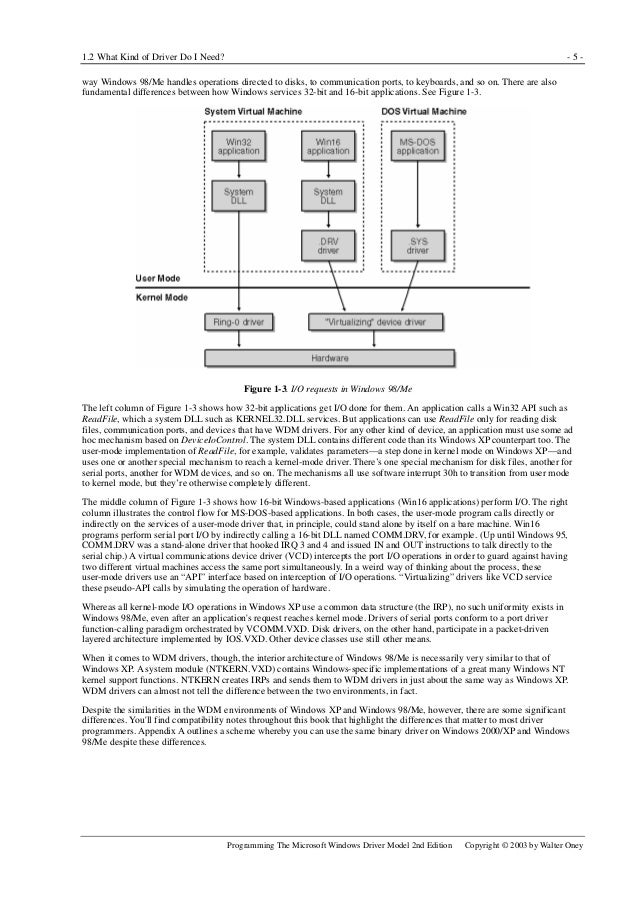Operating System Driver Provider Driver Version; Download Driver: Windows 2000 (32 bit) Walter Oney Software: 1.0.0.10 (1/27/2010) Download Driver: Windows XP (32 bit).
Drivers startek engineering. We would like to show you a description here but the site won’t allow us. Startek Cloud: Campus in the cloud Learn more about the Startek way to work from anywhere, augment on-premise efforts with remote capabilities in a hybrid model that promotes continuity and agility. Startek Cloud is supported by AI-driven tools, enabling experts to stay connected from anywhere on any process.
- Microsoft's new driver model for Windows 98 and Windows 2000 supports Plug and Play, provides power management capabilities, and expands on the driver/minidriver approach. Written by device-driver expert Walter Oney in cooperation with the Windows DDK team, this book provides extensive practical examples, illustrations, advice, and line-by-line.
- Community-created profile of Walter Oney Software in Fitchburg, MA including executive profiles, news and insights, videos and contact information. Spoke is the definitive source of curated information on millions of companies, people and industries.
Programming The Microsoft Windows Driver Model
by Walter Oney

Download Book
(Respecting the intellectual property of others is utmost important to us, we make every effort to make sure we only link to legitimate sites, such as those sites owned by authors and publishers. If you have any questions about these links, please contact us.)
link 1

About Book
Walter Oney Software Drivers
 Amazon.com
Amazon.comWritten for advanced C/C++ programmers, Walter Oney's Programming the Microsoft Windows Driver Model is a technically astute and clearly presented guide to writing custom Windows 2000 device drivers.
Walter Oney Software Driver
The author's command of the details of the new Windows Driver Model (WDM) standard is what makes this book such a clear success. (Because the WDM is rich in kernel and system services, the trick is often knowing how to use what's available rather than doing everything yourself.) The author presents a solid overview of the WDM architecture and breaks down the process of writing custom device drivers into manageable pieces, from the basics of loading device drivers to creating and processing I/O request packets. The book is very good at exposing kernel system calls, design principles, and programming techniques (such as managing synchronization and handling errors). There are also 'nerd alerts' that point out extremely technical material.

This book shows you what you'll need to create WDM drivers that cooperate fully with Windows 2000 (and Windows 98). Features like Plug and Play (PnP), Windows power management, and the new Windows Management Instrumentation (WDM) standard get full attention here. There is plenty of sample code (plus a custom Visual C++ AppWizard that generates skeleton code for a default WDM driver) to get you started. Examples for working with the S5933 PCI chip set (and other simple hardware) let you see WDM drivers in action.
The process of writing device drivers certainly has changed from the early days of DOS. But armed with this handy and thorough book, C/C++ programmers can successfully create drivers for custom hardware that take full advantage of all the features of the powerful new WDM standard. --Richard Dragan
Walter Oney Software
Topics covered: Windows Driver Model (WDM) overview and driver structure; kernel mode; physical filter, function and bus drivers; loading device drivers (DDs); driver objects; Windows 98 compatibility; kernel mode programming basics; error handling; memory management; synchronization; interrupt request levels, kernel synchronization objects, I/O request packets (IRPs), completion routines, plug and play (PnP) basics, reading and writing data, direct memory access (DMA) transfers, power management, error logging, watchdog timers, Windows Management Instrumentation (WMI), Universal Serial Bus (USB): bulk transfer and isochronous pipes; installing DDs: INF files, property pages, and Registry keys.
Book Description
Clarifies real-world driver programming issues for Microsoft Windows XP, Windows 2000, and Windows 98 through extensive practical examples, illustrations, advice, and code samples.
Related Free eBooks
